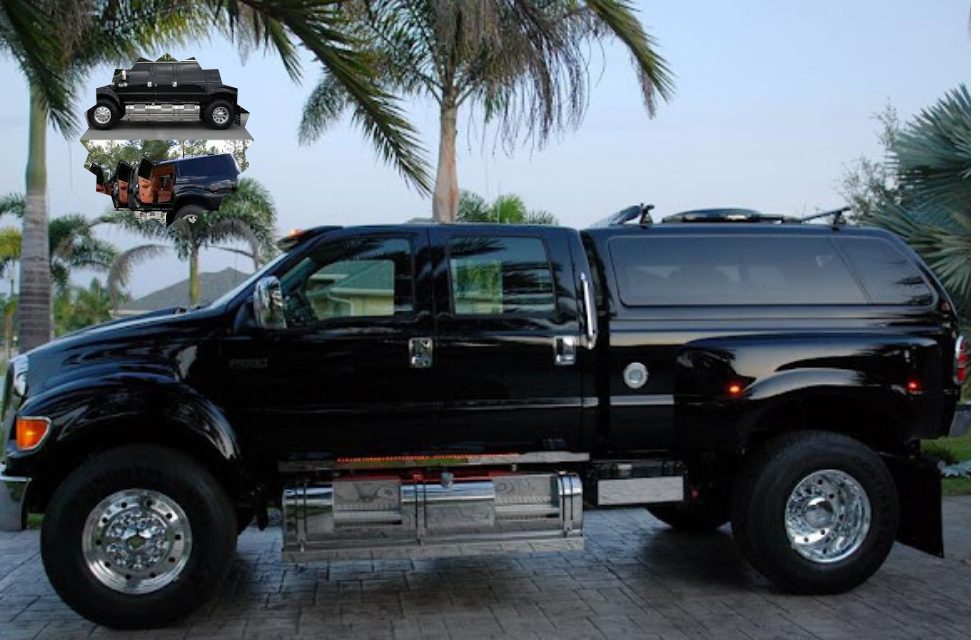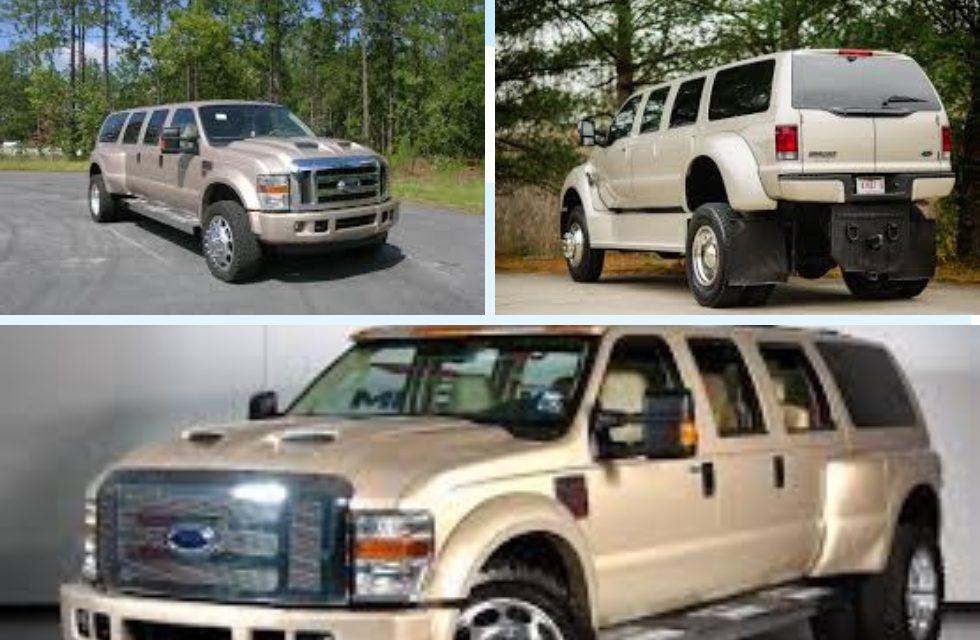Ford couldn’t have said it better when it stated in its press release that its Mustang GTD “is like no Mustang ever.” The seventh-generation S650 Mustang debuted in 2022 with racing in its genes, particularly with a Dark Horse variant followed by race-only GT3 and GT4 versions that prove Ford has European exotics in its crosshairs. But with the 2025 Ford Mustang GTD, the blue oval has entered its pony car into supercar territory.

“We didn’t engineer a road car for the track, we created a race car for the road,” said Jim Farley, Ford president and CEO. “Mustang GTD shatters every preconceived notion of a supercar.”
2025 Ford Mustang GTD: What’s New?

Similar to how the Mustang GT4 inherited the genes of the Mustang Dark Horse R, the newest Mustang GTD is a roadgoing version of the Mustang GT3 but with more power, madder styling, and boatloads of hi-tech engineering underneath its extensive carbon fiber architecture. But whereas the GT3 will see action in the 24 Hours of Le Mans in 2025, the Mustang GTD will arrive in limited numbers.
Race cars for the street almost always end up as backbreakers with obscure styling, head-splitting exhausts that violate noise regulations, middling practicality, and the propensity of guzzling fuel. It seems the Mustang GTD is heading in that direction, but only 1,000 units are available for ordering at about $300,000 each. Such rarity makes it sacrilege to trash on racetracks or the street, making it a prime candidate for climate-controlled, velvet-gloved storage instead.
However, the Mustang GTD is the quickest roadgoing pony car from the factory. And with its bevy of active aero bits, proprietary suspension, and high-strung supercharged V8 engine, any deep-pocketed collector lucky enough to snatch one will find the Mustang’s naughty vibe hard to resist.
Two Heads Are Better Than One

Like the Ford GT, the Mustang GTD (or Grand Touring Daytona, derived from the IMSA GTD racing class) is the brainchild of Ford and Multimatic, the same collaboration that brought the Mustang GT3 and GT4 to life. It’s around four inches wider than a regular Mustang GT, and it doesn’t take a racing eye to know it means business.
The aerodynamic-driven styling cues include an aggressive front splitter, a vented hood, bold vents on the fenders, and a hard-to-miss active rear wing mounted on the C-pillar that we could only wish was available for the standard Mustang. Ford said an available aero package adds an underbody tray and hydraulic front flaps that manage airflow in conjunction with that eye candy of a rear spoiler.
Go-Fast Innovations
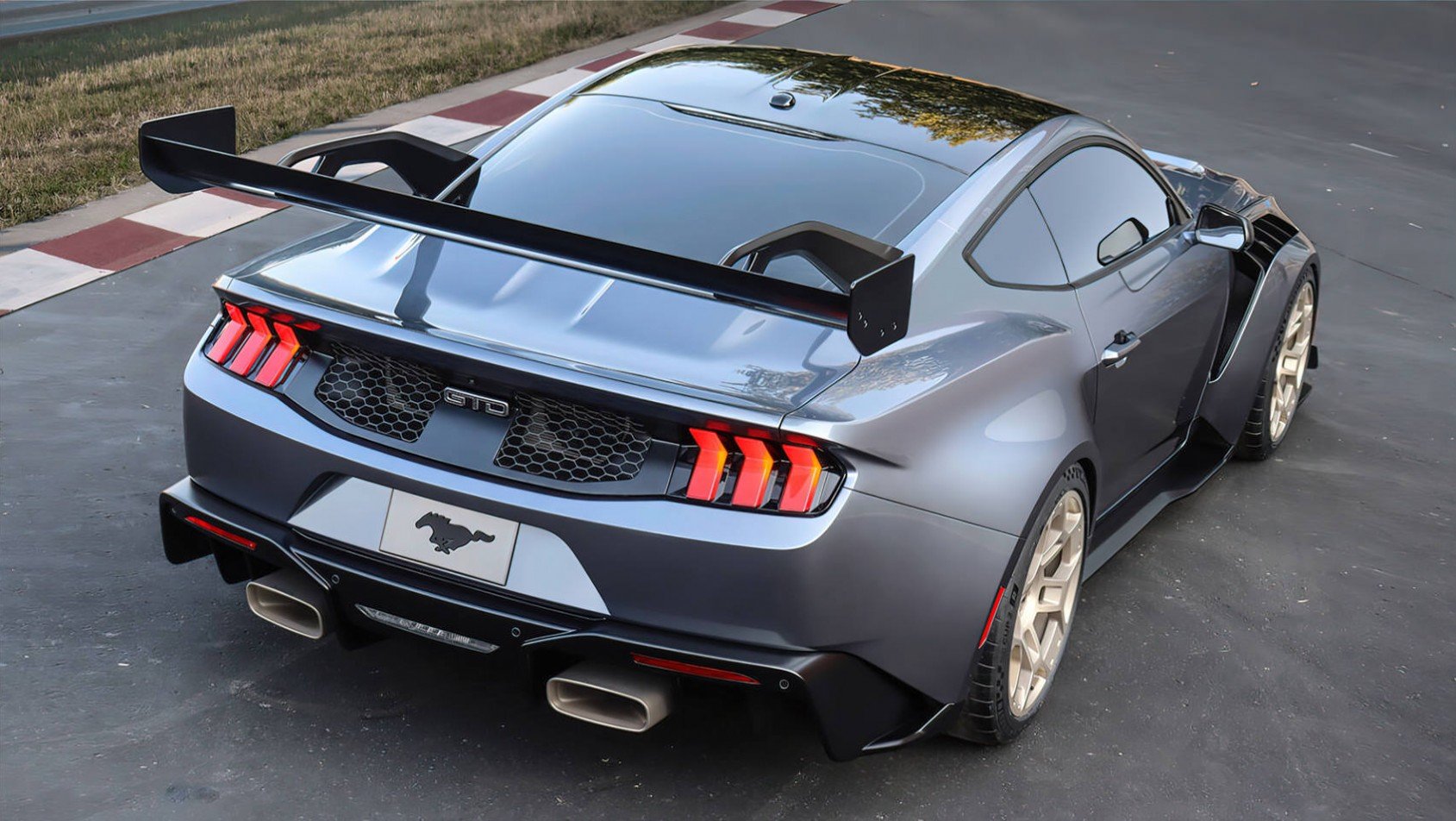
Ford didn’t reveal much about Mustang GTD’s V8 engine apart from its 5.2-liter displacement, a purpose-developed supercharger with dual air inlets, and dry sump lubrication (the first ever fitted to a factory Mustang). Capable of screaming to 7,500 rpm, the nearly 800 horsepower V8 spews the spent gasses to an available titanium exhaust with active valves.
Moreover, the Mustang GTD has a short-long arm front suspension and a pioneering integral link pushrod rear suspension with Adaptive Spool Valve dampers and coilover springs. Ford claims the horizontal cross pattern of the pushrods and the back architecture’s tubular subframe enables a 1:1 pushrod-to-damper ratio, helping the car react precisely to road undulations. In addition, the suspension could lower the vehicle by up to 40 mm in Track mode.
Framing it all are 20-inch forged aluminum wheels wrapped in 325-millimeter width front tires and 345-millimeter width rear tires. Magnesium wheels are optional to help reduce unsprung weight. Ford said the Mustang GTD’s front tires are as broad as the rear tires of a Ford GT, which somewhat cements the GTD’s reputation as a supercar hunter. Behind those alloys are Brembo carbon ceramic brakes with cooling ducts under the rear suspension to prevent fading and overheating.
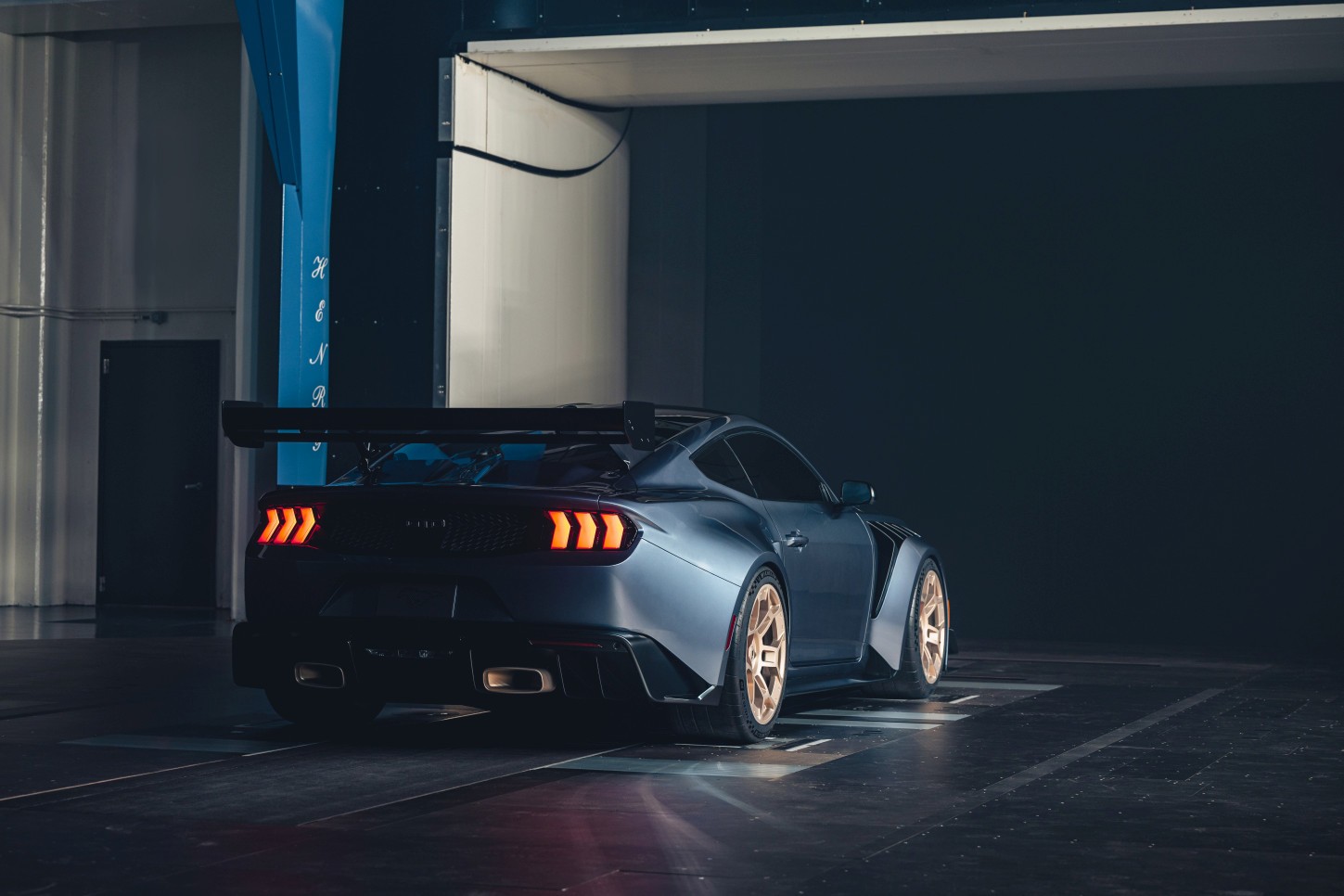
50/50 Weight Distribution
Whereas a V8-powered Mustang GT has a somewhat nose-heavy 53/47 weight distribution, the Mustang GTD takes it a notch further with its 50/50 weight distribution between the front and rear axle. The engine sends power exclusively to the rear wheels using an eight-speed rear-mounted transaxle gearbox and a carbon fiber driveshaft.
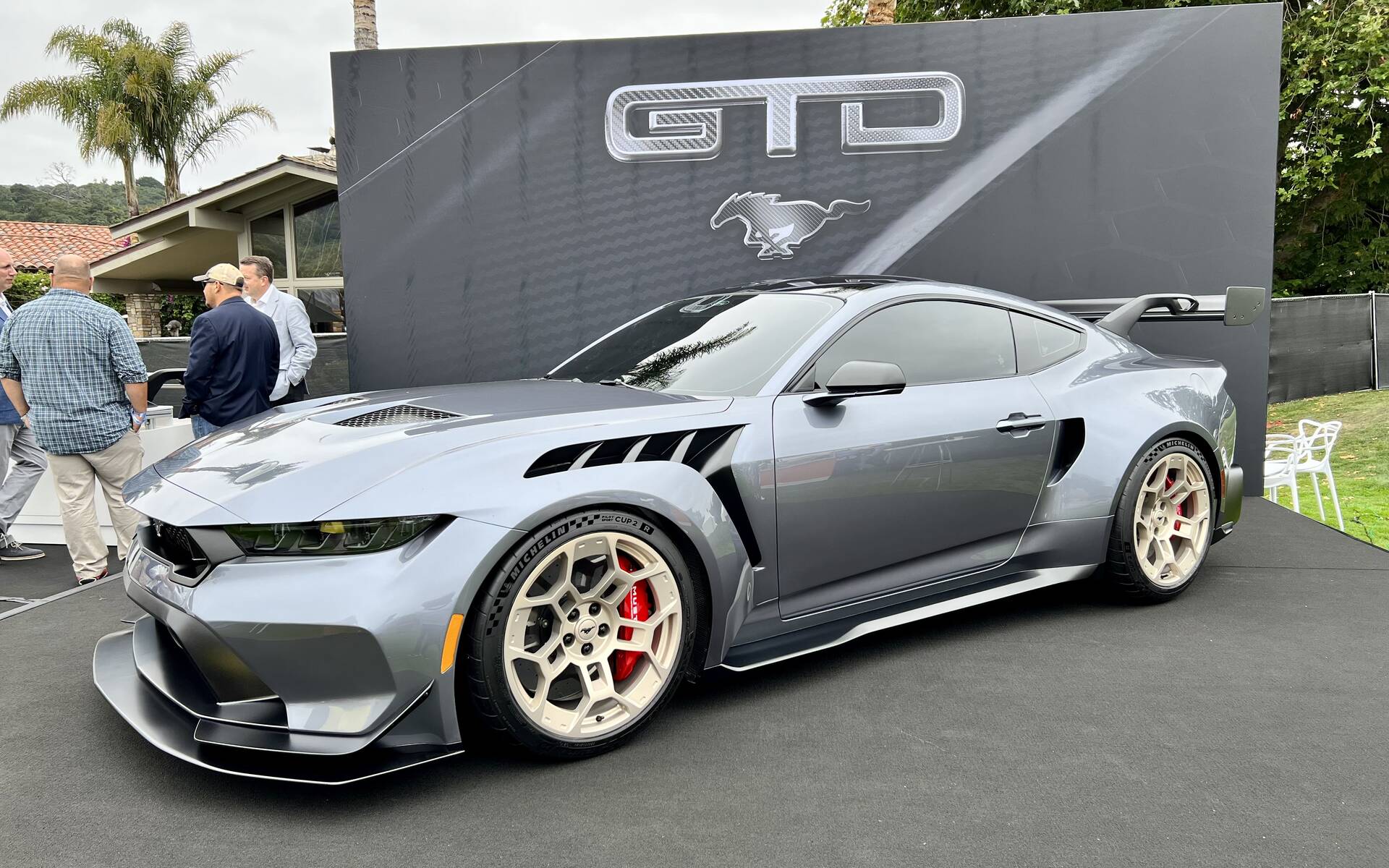
The GTD has no usable trunk space. Instead, occupying what was once a cargo area are components of the semi-active suspension, the hydraulic cooling system, and a unique transaxle cooler that breathes through heat exchangers and air scoops. Furthermore, Ford said the Mustang GTD will debut fresh technology new to the brand, like variable traction control with adjustable settings without taking your hands off the wheel.
How Fast Is The 2025 Ford Mustang GTD?

Ford is not yet ready to talk about the zero to 60 times or top speed numbers of its latest Mustang GTD. However, Ford chief program engineer Greg Goodall has shed light on the GTD’s record-setting potential: “The target for this project was clear – go much, much faster than we’ve ever gone before with a targeted sub-seven minute Nürburgring time, making it the fastest roadgoing Mustang from Ford.”
F-22 Raptor Titanium Parts
Ford took a page from Texas-based Hennessey Performance Engineering (HPE) in infusing cars with metal parts from space rockets. But for the Mustang GTD, Ford chose to reuse the titanium parts of retired F-22 Raptor fighter jets. The package includes 3D-printed titanium paddle shifters, a rotary shift dial, and the serial number plate.
Other goodies in the cabin include digital displays, Miko suede and leather upholstery, carbon fiber trim, and body-hugging Recaro seats.
2025 Ford Mustang GTD: Pricing & Availability

Ford will only make 1,000 or so Mustang GTDs, starting at around $300,000 each. The first deliveries will arrive in late 2024 or early 2025. Production is at the Ford Flat Rock Assembly Plant before shipping the cars to the Multimatic HQ in Markham, Canada, to handcraft the final assembly.




